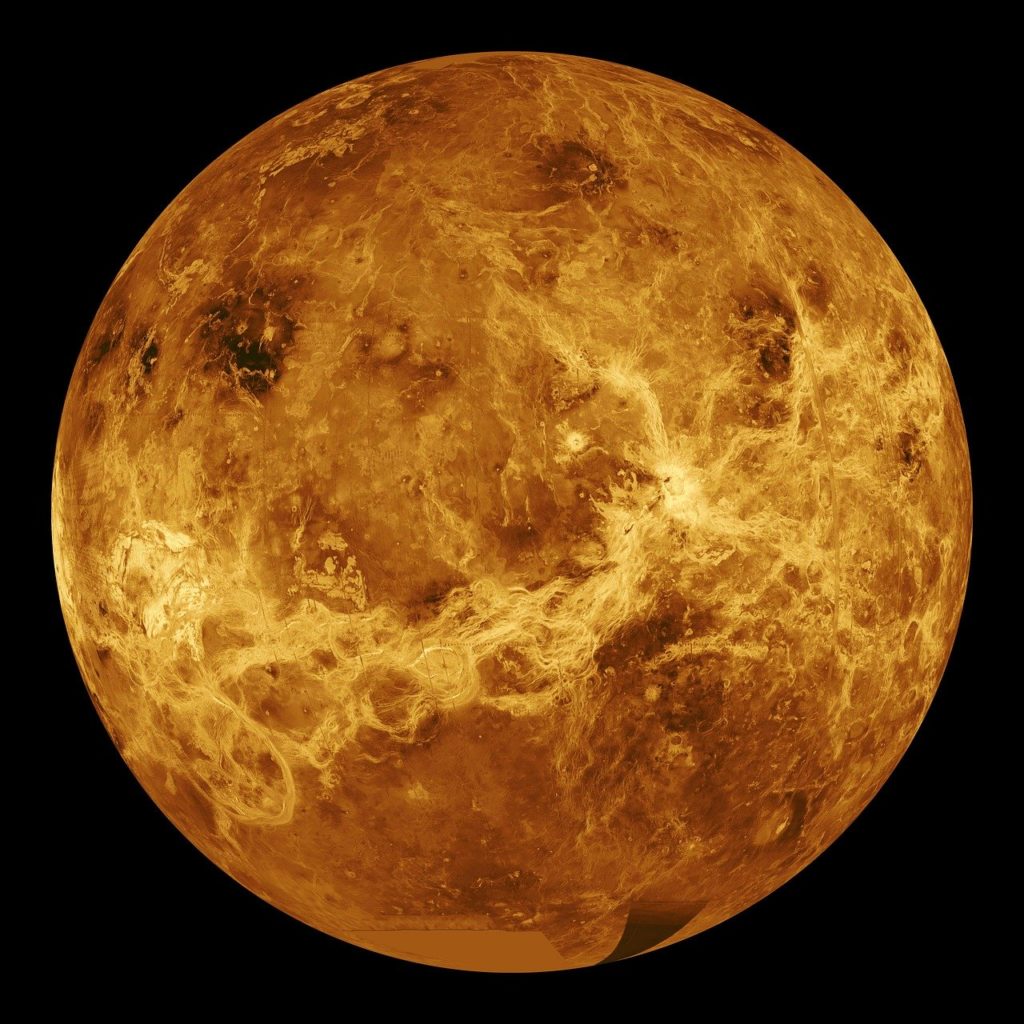Venus is the second planet from the Sun. It is often called “Earth’s sister planet” or “Earth’s twin planet” because of its comparable mass and size. In this article, we will learn some interesting facts about Venus. Let’s read.
Orbit
- Venus orbits at a distance of 67 million miles (average) from the Sun. 67 million miles is approximately equal to 0.7 Astronomical Units (AU). 1 Astronomical Unit is the average distance of Earth from the Sun. In other words, the distance of Venus from the Sun is 0.7 times the distance of Earth from the Sun.
Average distance of Venus from Sun = 67 million miles = 108 million kilometers = 0.7 AU
- Venus takes 225 Earth days to complete one revolution around the Sun. It completes one rotation around its axis in 243 Earth days. It is the only planet with a longer rotation period than its revolution period.

Physical Overview
- The landscape on Venus is highly volcanic. There are thousands of volcanic mountains and plateaus on Venus along with extensive plains.
- The highest mountain on Venus is Maxwell Montes which is almost 11 kilometers high, higher than Mount Everest.
- The hot iron core of Venus is roughly 6,400 km in diameter. The mantle surrounds the core which in turn is surrounded by rocky crust.
- The mass and diameter of Venus are similar to Earth’s mass and diameter.
Mass of Venus = 4.8675 * 1024 kg
Mass of Earth = 5.9724 *1024 kg
Diameter of Venus = 12,103.6 km
Diameter of Earth = 12,742 km
- Venus is the third densest planet in our solar system after Earth and Mercury.
Mean density of Venus = 5,243 kg/m3
Mean density of Earth = 5,514 kg/m3
- The highly dense atmosphere of Venus is mainly composed of Carbon Dioxide (96.5%) and Nitrogen (3.5% ). The atmospheric pressure on Venus is many times higher than Earth’s atmospheric pressure.
Atmospheric pressure on Venus = 92 bar
Atmospheric pressure on Earth = 1.014 bar
Interesting facts about Venus
- Venus is the second brightest object in the night sky after Moon.
- Venus is the hottest planet in our solar system with an average surface temperature of 464 degrees Celsius.
- Unlike Mercury where day and night temperatures vary vastly, the temperatures on Venus do not vary much due to the greenhouse effect.
- Uranus and Venus are the only two planets that rotate from east to west.
- Venus was named after the Roman goddess of love, sex, and beauty.
- Venus and Mercury are the two planets with no moons.
- Venus has no rings.
Read more
Mars and Venus are the most interesting planets in the solar system.